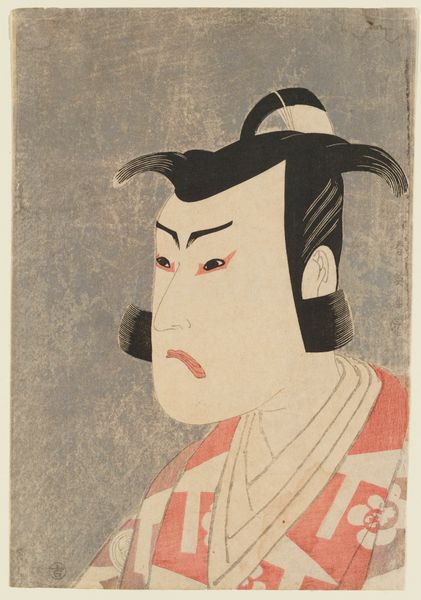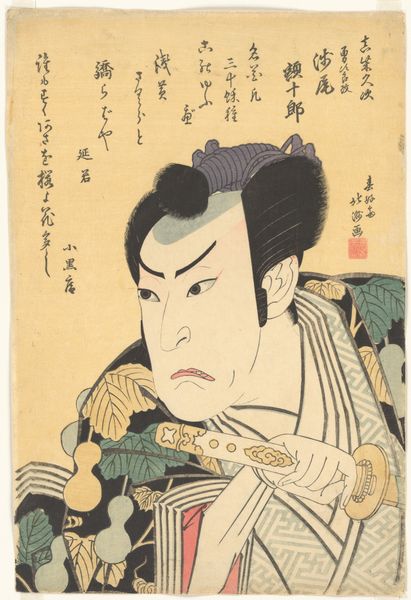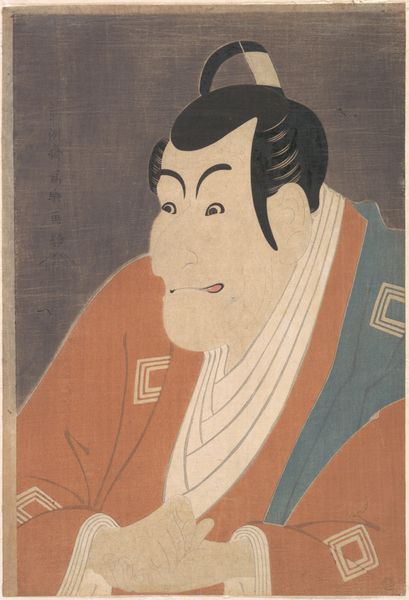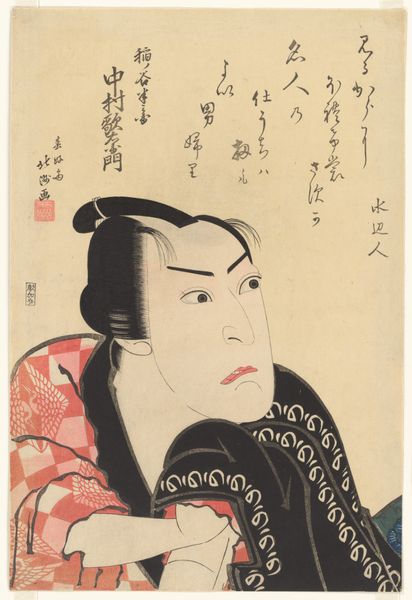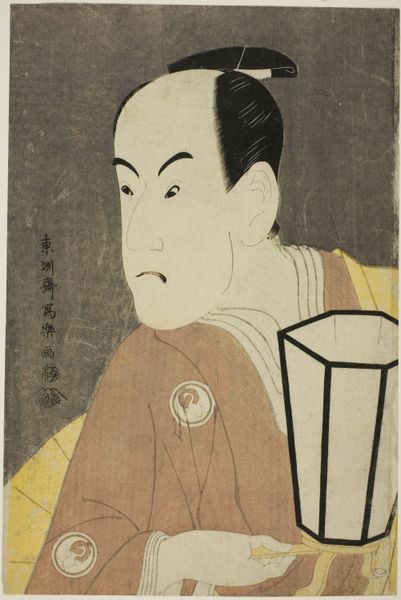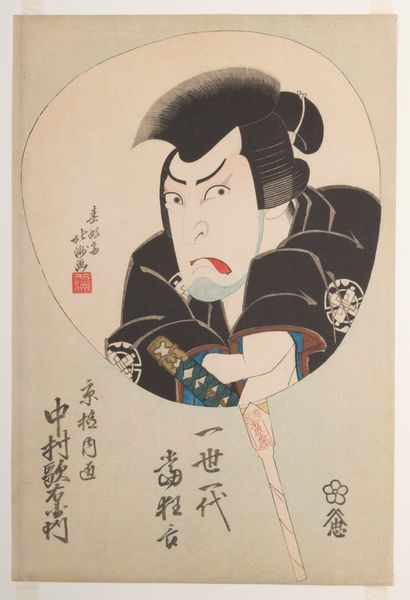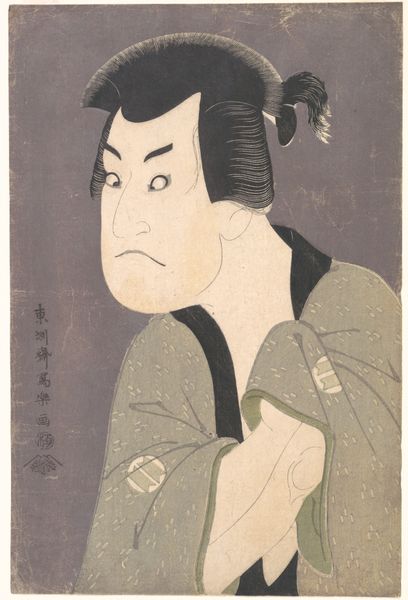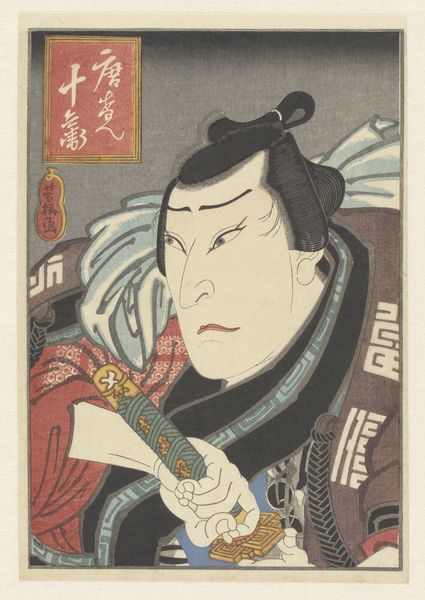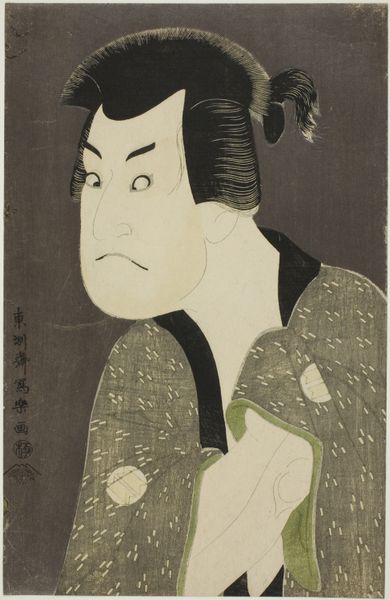
Bando Hikosaburo III as Sugawara no Michizane, from the Kabuki play, "Sugawara's Secrets of Calligraphy" (Sugawara Denju Tenarai Kagami) 1790 - 1810
0:00
0:00
#
portrait
# print
#
caricature
#
asian-art
#
caricature
#
ukiyo-e
#
historical fashion
#
men
Dimensions: 15 1/4 x 10 1/4 in. (38.7 x 26 cm)
Copyright: Public Domain
Curator: Katsukawa Shun'ei's print, made sometime between 1790 and 1810, depicts Bando Hikosaburo III as Sugawara no Michizane in the Kabuki play "Sugawara's Secrets of Calligraphy." It’s currently housed in the Metropolitan Museum of Art. Editor: What strikes me immediately is the intense expression and the dramatic simplicity. It’s pared down but loaded with emotion, like a still from a very heightened theatrical moment. Curator: Ukiyo-e prints such as this one, served a very important purpose for rapidly reproducing likenesses and were, themselves, a commodity available for purchase by theatre-goers. Kabuki actors were like celebrities and this print immortalizes Bando Hikosaburo in his celebrated role. Editor: Yes, I'm noticing those three distinctive spots on the actor's forehead—they immediately connect him to the specific role of Sugawara no Michizane, even outside of the theater. The costuming is stark. Even the simple fan contributes to the iconography. Curator: Exactly. What we need to remember, too, is that these prints would have been made by a team of skilled craftspeople –the artist like Katsukawa designed the image, but then a block cutter would painstakingly carve the design into wood blocks and a printer would apply ink and create the final impression. Editor: I wonder how this popular theatrical symbol of Sugawara morphed over time. The playwright used Sugawara’s real history as an exiled scholar who becomes deified after death to symbolize thwarted virtue. Even the most informed kabuki patrons would likely have seen some relationship with their current situation through Sugawara’s tragic life story. Curator: That is what makes this single-sheet woodblock print fascinating. What was made quickly for popular consumption opens a whole universe to be read over time: materials, modes of production, historical, cultural and personal symbolism. Editor: A wonderful thought; the image remains vital even as we now interpret both the stage and printing processes very differently than the consumers for whom it was originally intended.
Comments
No comments
Be the first to comment and join the conversation on the ultimate creative platform.
